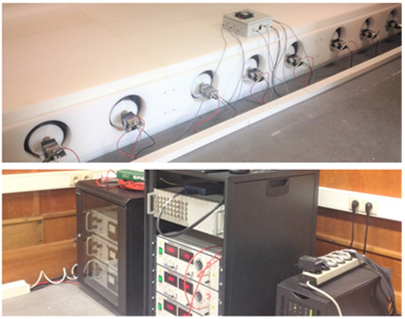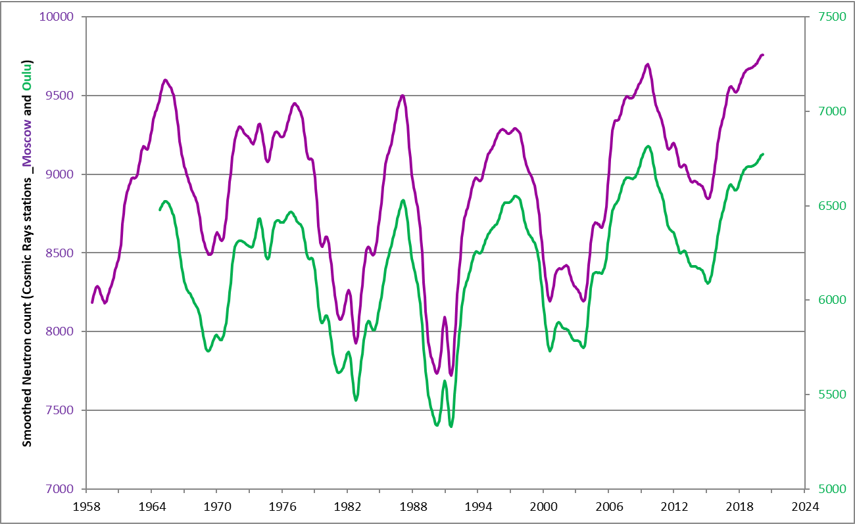Last week, the Sun was spotless once again. This year already totals 182 spotless days, and though the sunspot minimum has taken place in December 2019 (see the SILSO newsitem), it takes time for the new solar cycle to shape up. Hence, as we continue to go thru the current solar cycle minimum, the earth environment remains exposed to high-energetic particles coming from outside our solar system, the so-called galactic cosmic rays (GCR - see this STCE newsitem). When entering the heliosphere, cosmic rays encounter a turbulent solar wind with an embedded heliospheric magnetic field. The higher the solar activity, the more intense and complex this magnetic field, and the more difficult it is for a particle to make it all the way to the Earth. When some finally arrive, they collide with particles in the Earth's atmosphere, creating a shower of secondary particles such as neutrons. These neutrons are detected by neutron monitors such as in Dourbes (see image below) or various other sites around the world (Moscow , Oulu ,...). Due to their high energies, cosmic rays and their secondary particles pose important technological and radiation hazards to satellites and aviation.

The graph underneath shows the monthly smoothed neutron count (averages per minute) as recorded by the neutron monitors from Moscow (purple, since 1958) and Oulu (green, since 1964). One can readily see the 11 year solar cycle modulation, with particle counts being the highest during low solar activity (solar cycle minimum) and vice versa. There's also a 22 year cycle, consisting of a "pointy" (SC19-20, SC21-22) and a "flat" (SC20-21, SC22-23) maximum in the neutron counts. This is because the cosmic rays are charged particles, and thus they react differently to the different magnetic configuration in the heliosphere created after each polar field reversal on the Sun (the 22-year magnetic cycle). For the ongoing minimum (SC24-25), the maximum of the neutron count should be somewhat flat. From the graphs, it is clear that the neutron counts are at or very near their maximum value, which is very similar to those recorded during the unusual deep and long solar cycle minimum in 2008-2009. Some of the dips in the monthly values are due to high solar activity: many coronal mass ejections act as magnetic shields against the cosmic rays, effectively reducing the final neutron count. As an example, a small dip (remember: smoothed values!) in the neutron counts can be seen in 2017 following the high solar activity in September that year. Studies of cosmic rays are very important, as these massive high-energetic particles pose a formidable radiation hazard to astronauts on a future mission to e.g. Mars or the Moon.






